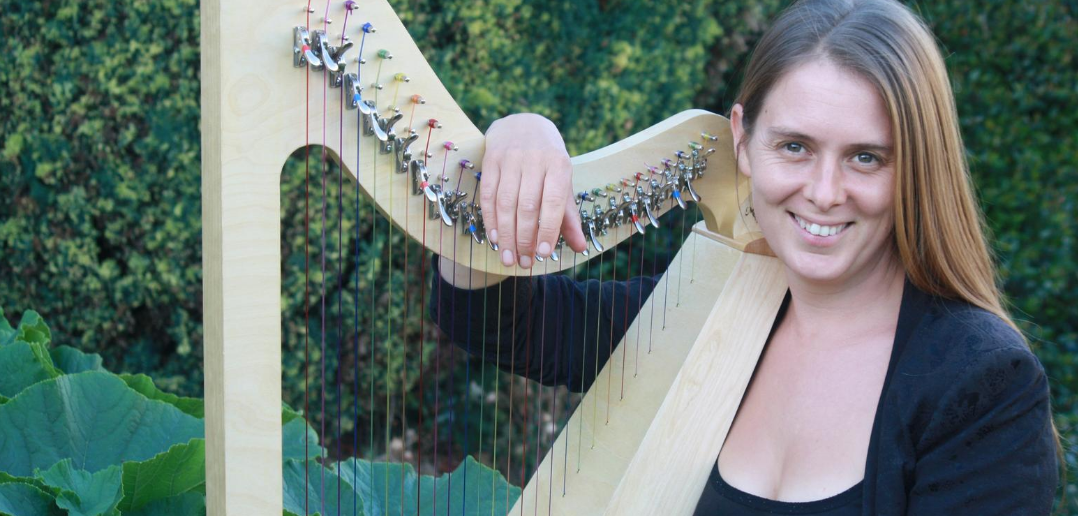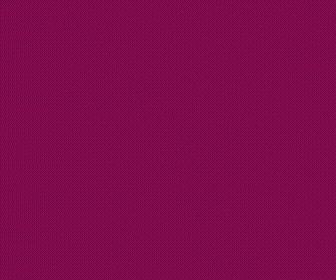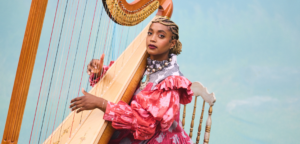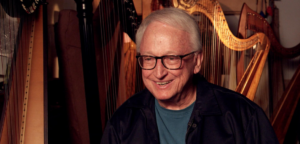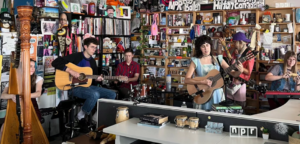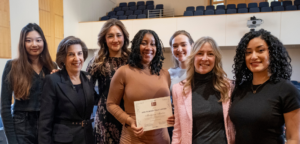Morwenna Louttit–Vermaat and husband Creag recently caught the attention of Yahoo News for their innovative Rainbow Harp, a system of color–coded strings that can aid in the process of note–reading. Louttit–Vermaat, a harpist with dyslexia, told Yahoo that growing up, she struggled to read music until she started putting color–coded stickers on her strings. This intriguing idea left us wanting to know more about the Rainbow Harp and the impact she’s seen it make on harpists who have been using the system.
First of all, I know the harp itself is your design. Can you first share a little about Hands on Harps and the Morwenna Rose harp model?
Hands on Harps is a business that was literally built on harp music. Every penny of our capital was raised by busking. In 2010, my now–husband and I parted with all our belongings and embarked on what ended up as a three–year busking trip around the world. We even walked the Camino de Santiago pilgrimage with our harp and guitar strapped to our backs.
Everywhere we went people asked me if I was local and could teach them. That’s when I had the idea to start a long distance learning platform using video. So people could learn wherever they were in the world.

Creag Louttit-Vermaat and Matthew Kirby (photograph by Simon Pizzey)
Halfway through our trip my husband made me a harp because my beloved 20 year old harp was beginning to show some battle wounds from so much travel. He loved the making process, and it sparked a new direction for him. That’s how it all started.
The Morwenna Rose is a simple 27–string harp. Initially the tunes we teach are all in C major so our students can have unlevered harps to keep the cost down. Then as they progress, they can buy levers in installments that we retrofit to their harp. First we add the Fs and Cs, then Bs, then all remaining levers. My parents struggled so much to afford a harp for me, so I have always been passionate about ensuring that the Morwenna Rose be as affordable as possible.
So then you took it one step further for the Rainbow Harp and created color-coded strings. Tell us about that a little. What strings are you using? Can you walk us through the string dyeing process?
As a dyslexic teenager I struggled so much with sheet music. My brain just doesn’t work fast enough to sight read. So I ended up devising a way to color code the notes so I could recognize them much quicker. This enabled me to continue playing at a time when I thought it was the end of the road for my harping dreams.
So from then on I have had a dream to make a harp with strings that match those colors. It’s hard having a passion that has such a huge barrier in the way of your progression. The Rainbow Harp gets rid of that barrier.
We use nylon strings, dyed with nylon dye. It’s a pretty toxic process; we boil them in the dye in our workshop in a well–ventilated area. It’s a very basic, labor–intensive operation involving a sauce pan and a hob (and lots and lots of stirring).

How did you pick what colors to use?
The colors picked themselves, really. I noticed as a teenager that the red and blue strings on a harp fit into the colors of the rainbow, so it seemed obvious that that’s what the other colors would be.
You mentioned earlier that this instrument was designed to aid your struggle with dyslexia. Who else can benefit from the color-coded system?
It can benefit anyone who has ever looked at sheet music and been intimidated by it. When we were developing it, we had it tested by people with special needs including Down syndrome and autism, pensioners, and our son Django, who is 4. But the majority of Rainbow Harp users are neurotypical adults. This is not just for people with disabilities. There are many studies that show that incorporating color into learning an instrument can help the learning process. The British Dyslexia Association, for example, recommends the use of color as a learning aid.
What have you observed from students who have used this method?
There is generally a brilliant response from students. It’s often like someone has turned a switch on and suddenly they get it. I know so many incredibly talented musicians who feel somehow not worthy of calling themselves a proper musician because they can’t read music. I feel like we are opening the door to a whole new wave of harpists who have all the creativity and skill but have until now been scared away by this complicated thing called sheet music.
Anything else you’d like to add?
There is something about the music of Turlough O’Carolan that has always spoken to me. Maybe it’s the fact that even blindness wasn’t a barrier to him composing such beautiful music on the harp. Maybe it’s because he travelled around living from his music as we have done, or maybe it’s the feeling I get when I hear and play some of his tunes. But I like to think that here at Hands on Harps we are reconnecting the harp with that age old tradition of teaching someone to play by showing them. And if they are blind or deaf (as some of our students are) or dyslexic or not that well off, they still have the chance to keep this ancient tradition alive.
For more information, visit rainbowharp.co.uk or handsonharps.com.





